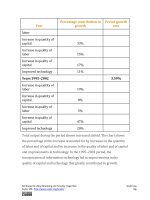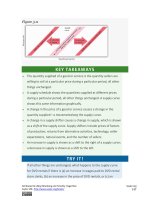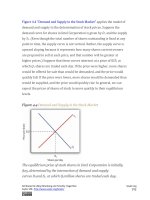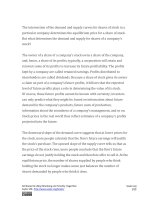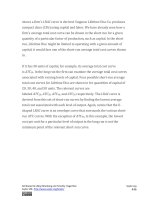Authors libby rittenberg 56
Bạn đang xem bản rút gọn của tài liệu. Xem và tải ngay bản đầy đủ của tài liệu tại đây (382.93 KB, 1 trang )
experience or through training are acquiring human capital. Children who
are learning to read are acquiring human capital.
The amount of labor available to an economy can be increased in two
ways. One is to increase the total quantity of labor, either by increasing the
number of people available to work or by increasing the average number
of hours of work per week. The other is to increase the amount of human
capital possessed by workers.
Capital
Long ago, when the first human beings walked the earth, they produced
food by picking leaves or fruit off a plant or by catching an animal and
eating it. We know that very early on, however, they began shaping stones
into tools, apparently for use in butchering animals. Those tools were the
first capital because they were produced for use in producing other
goods—food and clothing.
Modern versions of the first stone tools include saws, meat cleavers, hooks,
and grinders; all are used in butchering animals. Tools such as hammers,
screwdrivers, and wrenches are also capital. Transportation equipment,
such as cars and trucks, is capital. Facilities such as roads, bridges, ports,
and airports are capital. Buildings, too, are capital; they help us to produce
goods and services.
Capital does not consist solely of physical objects. The score for a new
symphony is capital because it will be used to produce concerts. Computer
software used by business firms or government agencies to produce goods
Attributed to Libby Rittenberg and Timothy Tregarthen
Saylor URL: />
Saylor.org
56
